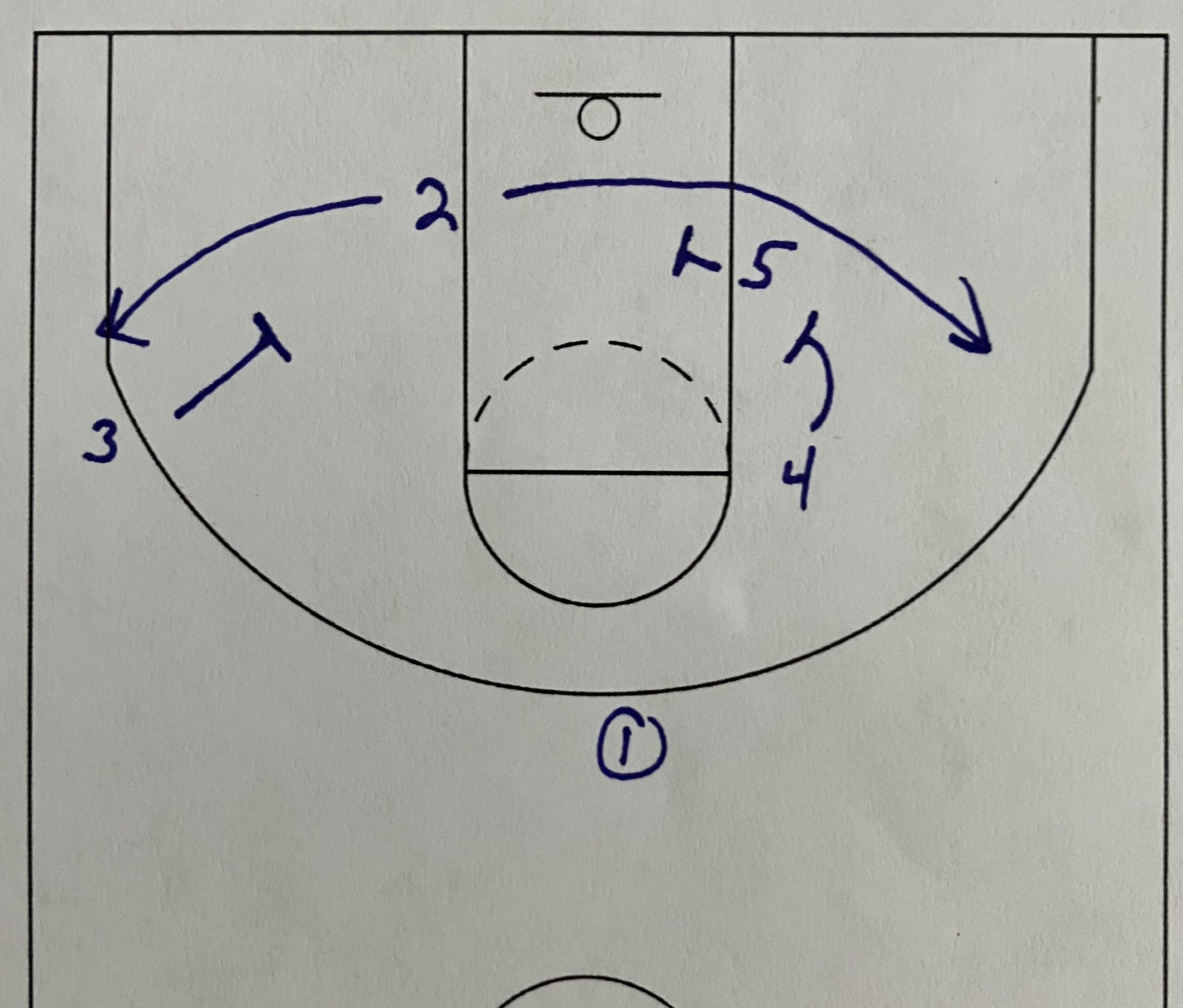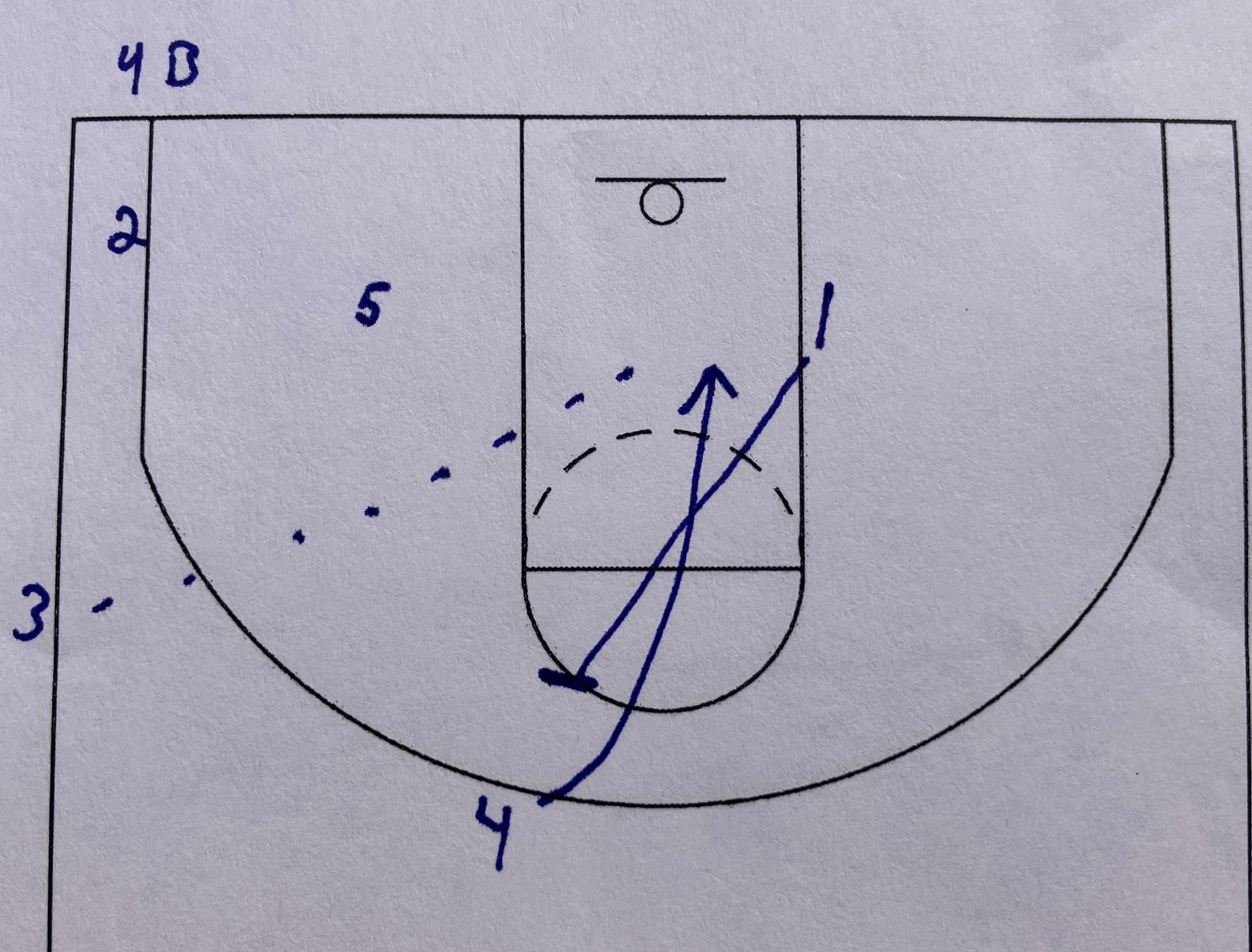The floppy action is one that I try to use in some way every single season. This gives a player the ability to read their defender and have multiple options to get open. This helps to prevent a defense from being able to overplay an offensive action.
Since I try and run a floppy action every season, I keep trying to find different ways to get into the floppy action. Some years it can be a single movement and sometimes the movement before the floppy action is quite extensive.
This play has a stagger screen to get a possible 3-point shot before moving into the floppy action. The initial stagger helps to keep the defense unaware of the floppy action getting set up. Then after the stagger screen, every offensive player is in the position they need to be in to have the floppy action without having to do anything else.

My normal transition has the players in the following 4-out setup as in the diagram above with the point(1) having the ball and everybody else in the positions they are in. This starting setup gives me the ability to go straight from transition into the play. So, this initial pass could be an advancement pass trying to get something out of transition. Or it could be a pass once everybody has set up in the half court.
The initial pass is made from the point(1) to the guard(2). The big(4) is moving into the middle of the court. After the pass, the point(1) is cutting into the ballside corner.
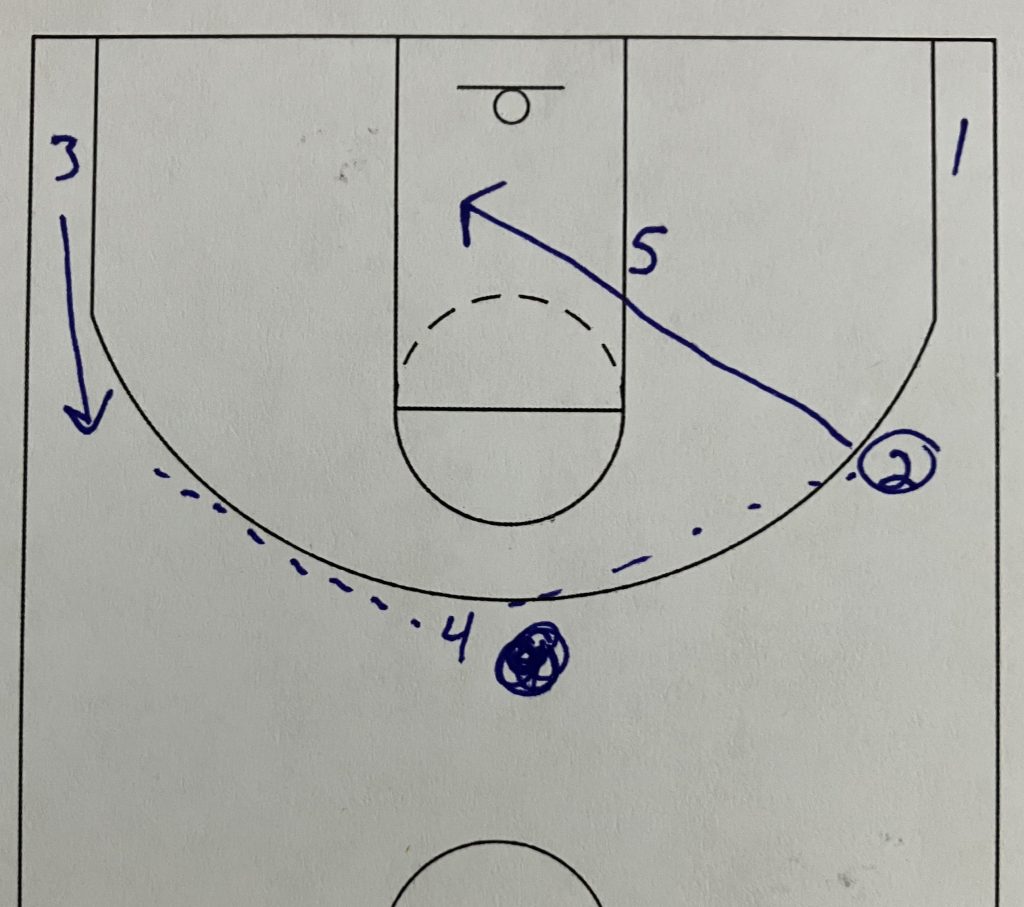
After the point(1) cuts, the ball is swung from the right wing to the left wing. After the guard(2) makes their pass to the big(4), they are cutting across the court to the block. This cut is the initial setup to the floppy action.
The center(5) could also come up and set a backscreen for the guard(2) if you wanted. The center(5) is setting 3 screens if they set the backscreen. They need to be somewhere just above the block but outside of the lane. The backscreen could be used to help the center(5) get away from the lane just enough to help with the next 2 screens.
The biggest issue for the center(5) is setting good screens without setting a moving screen. Since the center(5) is setting multiple screens, they could have the tendency to try and move from one screen to the next screen too quickly. The center(5) needs to get to their spot for each screen but also needs to be set throughout each screen before moving onto the next screen.
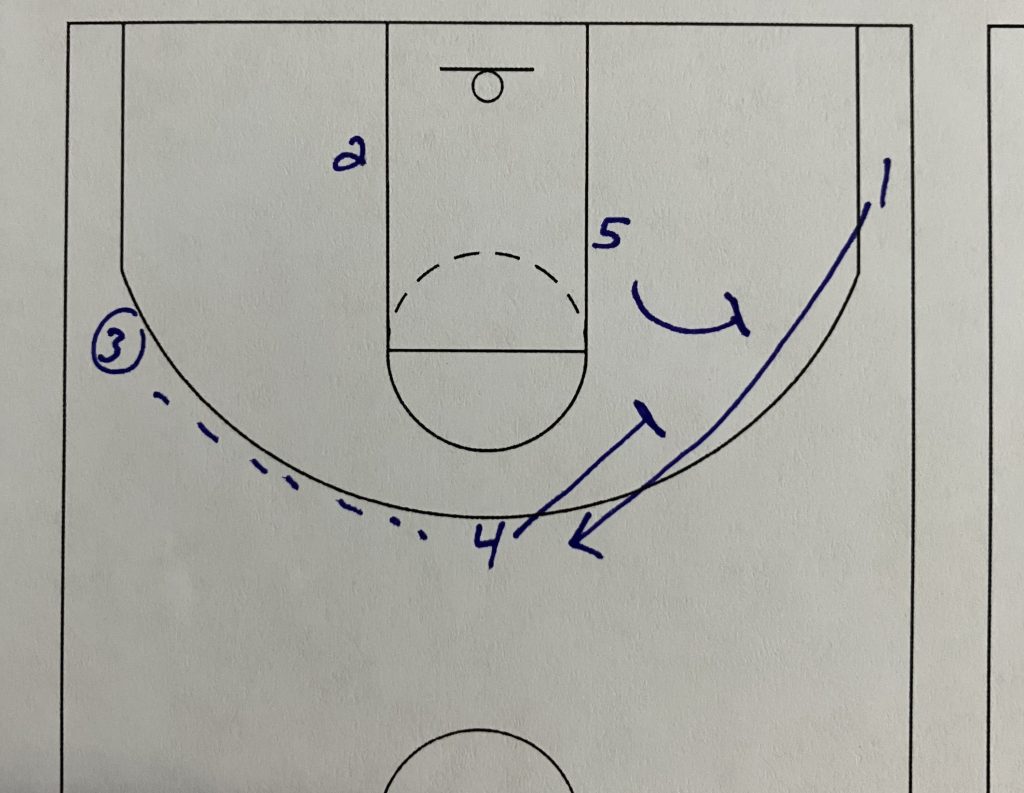
After the guard(2) cuts through, the point(1) is coming off of a double stagger screen to come back up to the top of the key. This is the last movement before the floppy action. While the floppy action is where the play is trying to get to, the previous cut by the guard(2) and this stagger screen for the point(1) give the offense chances to score before the floppy begins.
A good shooting point(1) could use this as a chance to get open and get 3-point shots. If the point(1) comes open off of the stagger, then the offense can get this 3-point shot before the floppy action. If the defense does not give the shot to the point(1) off of the stagger, then the offense will move into the floppy action.
The stagger screen can get a shot but it also is used to keep the defense having to guard an action before the floppy action is used. This prevents the defense from being able to see the floppy action getting set up, so they are not prepared to defend the floppy action when it happens next.
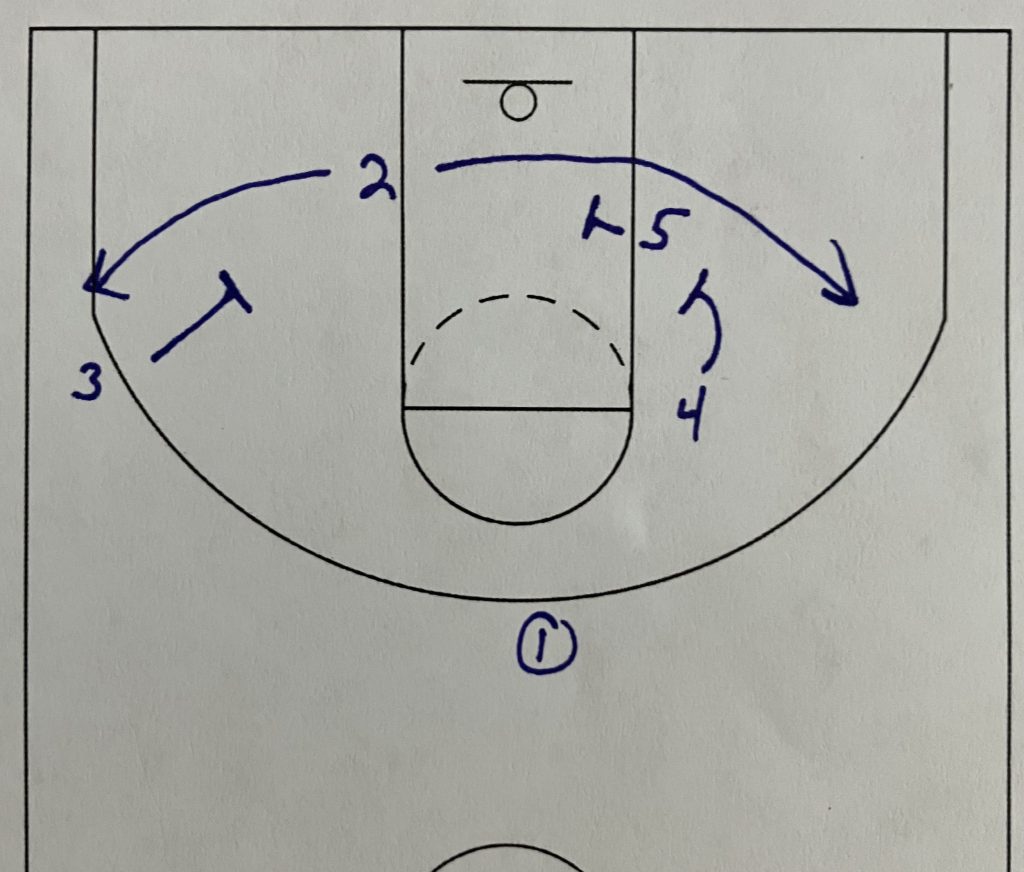
The floppy action is a single screen being set on one side of the court and a double screen being set on the other side. The player using the floppy action is in the middle. In this play, the guard(2) is on the block. The forward(3) is setting a single screen on the left. The big(4) and center(5) are setting a double screen on the right.
The guard(2) is reading their defender or making a jab step one way or the other to try and get their defender to react to one side so they can run to the other side. Once the defender starts one way, the guard(2) is running to the other side. The key is the guard(2) getting the defender to pick a side first. That one or two steps in the wrong direction is all that is needed for the guard(2) to be wide open coming off of the screen.
Conclusion
I really like the floppy action. I normally have one play every season with it. I do not want the opponent to ever get a good read on it. So, I change the play every season to get the right player in the middle of the floppy action. I also try and do some movement before the floppy. This gives the play options other than just the floppy action. These actions can also get the floppy defender already favoring one side over the other making the read even easier.
This play has multiple scoring chances. The flex cut by the guard(2) can get an easy layup. The point(1) is coming off of the stagger screen for a potential 3-point shot. And finally the guard(2) has the floppy action to end the play. This play is giving the defense a lot of different movements to defend. One small breakdown will give an open shot.
It also works well for me because of the ability to go straight into the play right out of transition. The ability to move from transition into a half court offense gives the defense little time to adjust. We can have the initial pass happen early by advancing the ball in transition. This gives it that little bit of extra disguise to throw the defense off even more.

